Mbuna Lavender is another name for the Rusty Cichlid, which is not as violent as the other cichlids. It has a unique color with variations of orange and red that give it a rusted appearance and a vivid azure to violet projection. This fish has orange skin colors with a bluish shimmer when it is a youngster. This fish varies in color and gets more gorgeous as it matures into adulthood. Its body turns crimson, and the bluish projection on its fins turns violet.
This fish prefers acidic environments with a ph of at least 8. This fish’s native environment is a beach with rocks. Water temperatures in the natural are pretty high, and they often reside in coastal areas, rocky coastlines, and windy tropical waters with a high pH.
If you do not know the basics of this fish, taking care of the Rusty Cichlid can be challenging. However, if you do know the basics, it will be relatively more straightforward for you to take care of this fish. In this article, you will learn a lot about how to take care of the Rusty Cichlid. This article will give you all the information you need about the Rusty Cichlid.
If you have brought home a Rusty Cichlid or plan to bring one, and if you are confused about ways to take care of it, then this article is a suitable space for you! Read on to know more about the Rusty Cichlid!
Table of Contents
About Rusty Cichlid
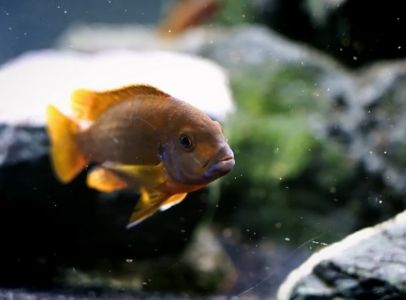
| Common Name | Rusty Cichlid |
| Scientific Name | Iodotropheus sprengerae |
| Origin | Lake Malawi, East Africa |
| Suitable temperature | 78-80°F |
| Average Size | 3-4 inches |
| Tank Size | 55 gallons |
| Diet | Omnivorous |
| Lifespan | 5 years |
| pH level | 7.8-8.2 |
| gH | 7 – 9 |
| Lighting | Medium |
Behavior
Do you have questions about the behavior of the Rusty Cichlid? Are you wondering if they are aggressive? Well, don’t you worry! Because the Rusty Cichlid is peaceful compared to other species that come from Lake Malawi in East Africa. However, you must remember that they can show a bit of aggression toward other fish that hails from the same genus.
This Lake Malawi fish, on the other hand, enjoys interacting with some other Mbuna fish. Do you, however, understand anything noteworthy about any of these? Well, they aren’t matching fish at all. As a result, it would be preferable if you maintained the males in a harem with some females throughout their mating season to reduce their hostility towards each specific female fish. Also, avoid putting all those little cichlids in the same tank as Lake Malawi Peacocks since this will cause them a lot of stress.
Size and Lifespan
This cichlid is just around 4 inches long, but it may grow to be 5.3 inches long when raised in a healthy environment. This fish needs regular maintenance and may survive for 3 to 5 years if given the proper circumstances for growth.
Rusty Cichlid Tankmates
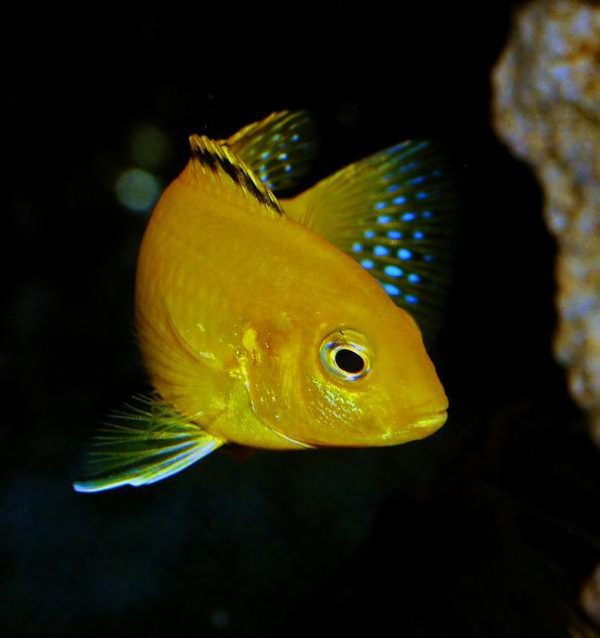
It is readily priced out of the market by larger, more dominant fish because of its less aggressive behavior. It would be just as vital to choose the proper fish for your Rusty Cichlid as it is to have the appropriate PH and temperature parameters. Peacock, Firemouth, and Electric Blue Ram variants are fish that complement it nicely and are endemic to Lake Malawi. Aulonocara, Protomelas, and Copadichromis are a few of the varieties that can be associated well with Rusty Cichlid. You can also include the Tanganyikan species if you like. Even if you already have fish that are friendly with the Rusty Cichlid, you must also consider the gender ratio. Make absolutely sure your aquarium only has 13 males, and the remainder is females.
Rusty Cichlid Tank Size
The aquarium size is vital for this fish. The fish is not particularly territorial, but they would love to have some space while coexisting with several other fish. A couple of Rusty Cichlids requires a freshwater tank with a capacity of 55 gallons or more. If you want to purchase more than just a pair, go for a bigger fish tank and keep the proportion in mind.
Rusty Cichlid Care Guide
Tank set up
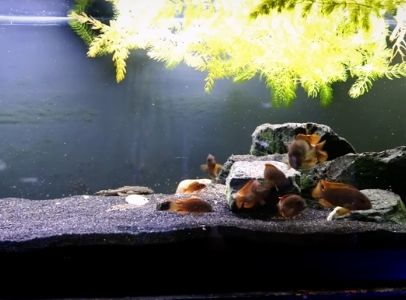
Rusty Cichlid care may appear simple, but it may be rather tricky owing to long-term care. There are a few factors you must pay extra attention to in order to raise beautiful and content fish. This species like being surrounded by plants. Therefore a tough landscaped aquarium would’ve been excellent. Vegetation like Christmas moss or Java moss, or even Anubias, are great picks because this fish likes to munch on fragile vegetation so that you won’t have a problem in your aquarium.
The most crucial component for this species is to provide optimal water parameters; the remaining is relatively simple. Soil texture or small rocks would just be ideal for such a fish to excavate its own homes as they dig a bit. Together with the vegetation described previously, stones or just any twig would be ideal for this species. Just make absolutely sure there’s enough room for such fish to move about comfortably.
Rusty Cichlid is just a peaceful cichlid, yet they require hiding places to help them have a good and healthy life. The following are among the things that can help this species to feel less stressed when it’s in a colony, breeding, or perhaps even playing around:
- Tough Plants
- Pebbles
- Inverted clay pots
- Grottoes
- Mangrove snags
These accessories will make your tank look extremely attractive too!
Water Parameters
Water quality parameters are critical for this species, yet they are not hard to manage after stabilizing the tank. Because this species dwells in harsh, acidic water with high degrees in the natural environment, it’s critical to keep the habitat and maintain an atmosphere that’s comparable to its native home.
The temperature must be kept between 78 and 82 degrees Fahrenheit, the pH ought to be between 7.8 and 8.6, and the water hardness should really be between 10 and 25 degrees Fahrenheit. Rotten waters are not suggested since they might make the fish sick. Purification and oxygenation are also vital to water quality, with 25% of the total volume of water changed every week.
Diet
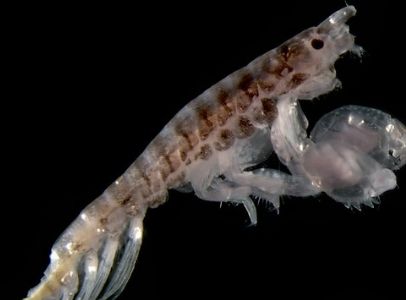
You must know that feeding the Rusty Cichlids isn’t really a complicated process. Because they are omnivores by temperament, you can easily offer them about any high-quality flake food available in suitable dimensions.
Ensure that the granulated feeds are explicitly designed for Mbuna fish. You may also modify their food using Mysis shrimps to keep things interesting. It is also good to feed nutritional and vitamin-rich brine shrimps to ensure that they get the nutrition they need. These are also able to live on mosquito vectors. So, why serve them the same dull meal when you can give them some diversity in their diet?
Malawi Bloat is far more likely to affect any fish from Malawi Lake. They have a tendency to be hungry all of the time, even if they’re not. As a result, you should only serve your fish 1-2 times a day. You should give them food that they can consume in 30 seconds or in a minute. They can withstand a lot of abuse. As a result, they get accustomed to being starved for a few days. It is quite OK to miss or skip their meal for a whole day or even a few days. It will have no damaging consequences on their beautiful skin tone.
How big does a rusty cichlid get?
Rusty cichlids may grow up to ten cm in length. Males often grow to be four inches or ten centimeters in length. Females are, however, somewhat smaller. Males may be distinguished by the presence of different egg spots near close to their anterior fin. Males also have a faster growth rate than their female counterparts. These cichlid species are dimorphic, which implies that the male and female versions are nearly identical.
Rusty Cichlid Disease
We have mentioned diseases that your Rusty Cichlid can contract above. However, let us look at it in detail now! Remember that freshwater fish are more prone to falling sick. Hence, you need to ensure that they are healthy and that if they do fall ill, their diseases are being treated in the right ways if they do fall sick. The different conditions that your Rusty Cichlid can contract are:
1. Swim Bladder Disease
This condition damages your cichlid’s bladder, making it difficult for it to remain immersed. Physical harm to the species or illnesses such as cancer or TB is the most common causes. Diet is also another factor that contributes to Swim Bladder Disease. This disease also causes constipation. Hence, you need to ensure that your cichlids are being fed a high-fiber diet rich in peas and spinach.
2. Fungal Infection
Like every freshwater fish, Rusty Cichlids can develop a variety of illnesses, and there are a few that should be noted because they are also frequent in cichlids. Fungi and other worms may trigger several ailments; in this situation, if you notice a white ring surrounding your fish’s mouth, it’s most likely due to a fungal infection. Thoroughly cleaning your aquarium is the best way to deal with this.
3. Ich
Ich is a frequent condition in which the species seems to be coated with saline and tries to scrape itself over the tank’s items. Eventually, to cure Ich, increase the water temperature to 80 degrees F and maintain that level for three days. Before adding the dosage, be ready to adjust the water for at least 50% and eliminate the carbon filters since this will prevent the drug from being extracted.
4. Malawi Bloat
This condition, typical among African Cichlids, is belly-bloating that produces fast respiration, lack of appetite, and excrement discoloration. In three days, this can kill your fish if you don’t treat it. Therefore, it is incredibly deadly. The exact reason for this is uncertain. However, it is thought to be due to poor aquarium conditions. This may be accomplished by making various tank adjustments, such as reducing the carbon level from your tank filter.
5. Tuberculosis
TB is not only a human illness; it may also be lethal to your Cichlids. Lack of appetite, patches on the body, and ragged fins are all indications of this condition. Your fish will seem dull and sluggish, which might cause behavioral abnormalities. If you fear that one of your Cichlid has become poisoned, you must act quickly. All fish must be moved to a separate medical tank, which will be treated with Melafix. Before returning the fish, make absolutely sure the tank is thoroughly cleaned and disinfected.
6. Cotton Wool Disease
Cotton Wool Disease is the kind of disease that creates a fuzzy growth all over the fish’s body and fins. One of the reasons why your fish can get this disease is the fungus that is naturally found in the tank. Another culprit for this disease could also be stress. If your Rusty Cichlid is kept in a tank with the wrong parameters and setup, your fish can get uncomfortable. This will manifest into stress, and your fish can contract this disease. Antifungal medication and a saltwater bath is the best remedy for this disease.
Difference Between Rusty Cichlid Male vs. Female
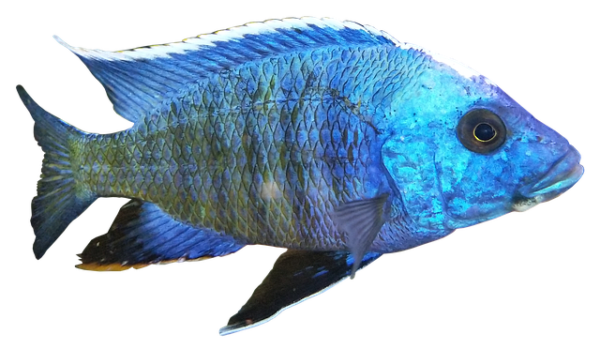
When it comes to sexual dimorphism, it is pretty difficult to distinguish between male and female Rusty Cichlid. One feature that you can look for is that females tend to have a rounder body, and their dorsal fins are rounder. Male Rusty Cichlid has sharper features. They have larger fins. Their anal fins also have caviar spots.
Final Thoughts
Should you keep a Rusty Cichlid as a pet in your tank? Well, the answer is yes. However, this is only if you are ready to take care of them in the best possible way. While this fish does have an unusual appearance, it is a very peaceful and charming fish. Adding them to your tank will make it look more beautiful. It is pretty troublesome to create the perfect environment for this fish. However, we hope this guide has helped you understand what this fish needs!
No related posts.
